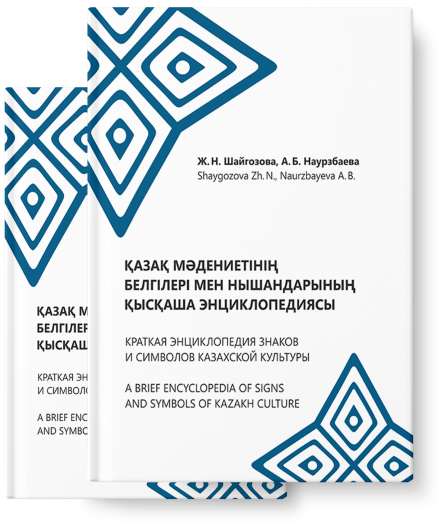
A short encyclopedia of
Signs and symbols of
Kazakh culture

Aqtyq, in memorial rituals, is a piece of white cloth, usually cottony, that pilgrims place on the grave of a saint, possibly taking another cloth previously brought by others, “charged” with the healing energy of the sacred place.
In earlier times, an aqtyq represented livestock given to the family of the deceased by close relatives, or if the deceased was bi or töre. Usually it was a camel, a horse or a ram. Those who did not have sufficient means could donate cloth or clothing. The practise in the structure of such ritual system meant voluntary offering of gifts to supernatural beings with a wide range of motivations – from committing a “good” and “greatest” deed to “exchange”, i.e. aqtyq has a function as a ritual mediator.
In traditional culture, the aqtyq served as payment to the male owner (aiğyr or bura) for covering a mare or camel. In this case, the aqtyq was given secretly, in secret.
Aqtyq as a cultural sign has a positive connotation in all its uses: It is supported by the term itself, which contains the meaning of aq (white) – sacral in the Turkic understanding of colour and associated with the heavenly realm in the traditional Kazakh worldview.

